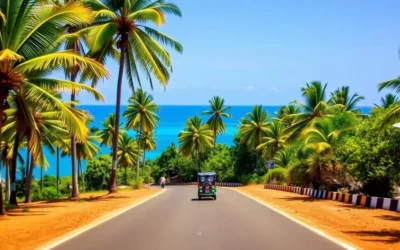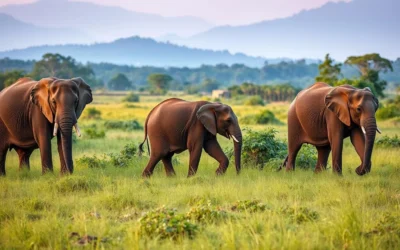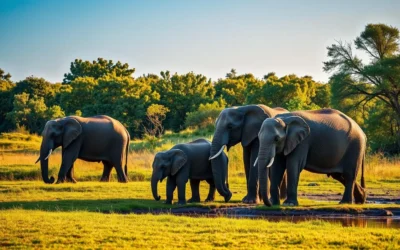✓ Accommodations✓ Flights✓ Rental Cars✓ Tours & Activities
When you think of Sri Lanka, its vibrant culture and rich history come to mind. At the heart of this island nation lies its linguistic diversity. Sinhala and Tamil are the two official languages, each playing a vital role in shaping the country’s identity.
Sinhala is spoken by the majority, especially in the southern, western, and central regions. Tamil, on the other hand, is prominent in the northern and eastern areas. These languages are not just tools for communication but also symbols of cultural heritage.
Over the years, historical influences have left their mark. Words from Portuguese, Dutch, and English have blended into the local dialects, adding layers to the linguistic landscape. This mix reflects the island’s complex past and its adaptability.
Language in Sri Lanka is more than just words. It’s a way to express identity, connect communities, and preserve traditions. As you read further, you’ll discover how these languages have evolved and continue to shape everyday life on this beautiful island.
Overview of Sri Lanka’s Linguistic Landscape
Exploring Sri Lanka’s linguistic landscape reveals a story of unity and diversity. The island is home to a rich tapestry of languages, each contributing to its cultural identity. Sinhala is spoken by 69% of the population, making it the most widely used language. Meanwhile, Tamil is prominent in the northern and eastern regions, with 25.2% of the population using it as their primary language.
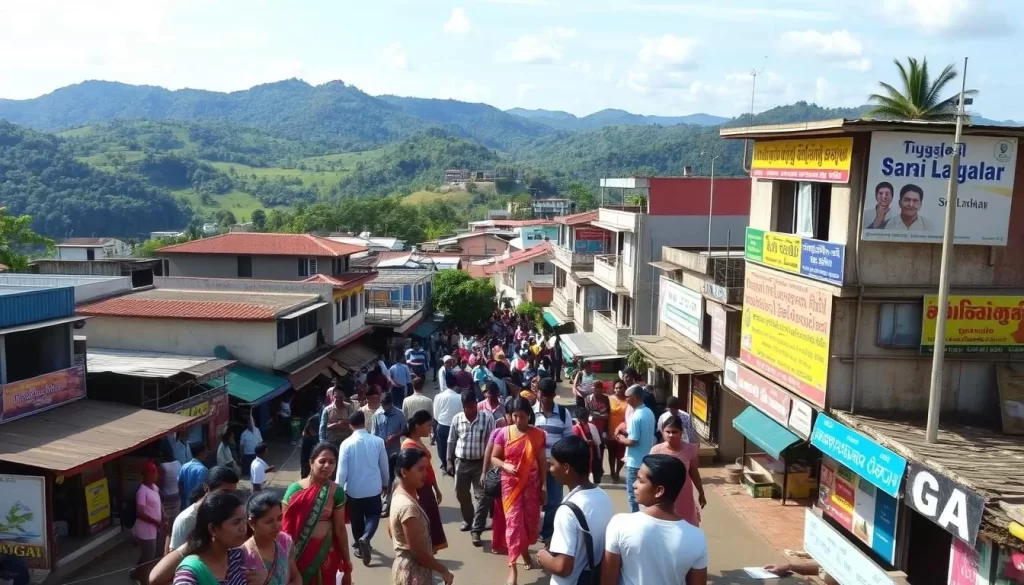
These languages are more than just tools for communication. They reflect the heritage and traditions of their respective communities. For instance, Sinhala is deeply tied to the Sinhalese group, while Tamil is a cornerstone of the Tamil community’s identity.
Cultural and Demographic Insights
The linguistic diversity of Sri Lanka is closely linked to its demographics. With a population of over 21 million, the island is a melting pot of cultures. Language plays a key role in shaping daily life, from education to media. The trilingual education system, which includes Sinhala, Tamil, and English, ensures that language bridges cultural gaps.
Historically, language policies have evolved to reflect the island’s changing dynamics. For example, Sinhala was declared the sole official language in 1959, a decision that had lasting impacts. Despite these shifts, Tamil remains a vital part of the national identity, especially in regions where it is predominantly spoken.
The Importance of Language in National Identity
Language is a powerful symbol of identity in Sri Lanka. It unites communities while preserving their unique heritage. As one scholar noted,
“Language is the soul of a nation, carrying its history and aspirations.”
Today, both Sinhala and Tamil are recognized as official languages, reflecting the island’s commitment to inclusivity. This dual-language policy helps foster unity among diverse groups. It also highlights the role of language in shaping societal norms and values.
Understanding this linguistic landscape offers insight into the island’s cultural richness. Whether you’re exploring its history or engaging with its people, language serves as a gateway to deeper connections.
Sri Lanka: Official and widely spoken languages
The linguistic fabric of Sri Lanka is woven with threads of history and culture. Sinhala and Tamil stand as pillars of this vibrant identity. Together, they shape the nation’s communication, traditions, and unity.
The Dominance of Sinhala
Sinhala is the primary language for about 70% of the population, making it the most widely spoken. Its roots trace back centuries, evolving with influences from Tamil, Portuguese, and Dutch. This blend has enriched its vocabulary, making it a living testament to the island’s history.
In daily life, Sinhala dominates education, media, and government. It’s not just a tool for communication but a symbol of cultural pride. Festivals, literature, and art often celebrate its richness, keeping traditions alive.
The Role of Tamil in Northern and Eastern Regions
Tamil thrives in the northern and eastern parts of the island, where it’s the main language for over 4.7 million people. It’s deeply tied to the Tamil community’s identity, shaping their customs and traditions. From religious ceremonies to local media, Tamil plays a central role.
Despite historical challenges, Tamil remains a vital part of Sri Lanka’s linguistic landscape. Policies recognizing it as an official language have helped preserve its significance. This inclusivity fosters unity and respect among diverse groups.
| Language | Percentage of Speakers | Primary Regions |
|---|---|---|
| Sinhala | 70% | Southern, Western, Central |
| Tamil | 25.2% | Northern, Eastern |
Both languages reflect the island’s cultural diversity. They serve as bridges between communities, preserving heritage while fostering connection. Whether through words or traditions, they remind us of the power of language in shaping identity.
Minority and Creole Languages in Sri Lanka
Beyond the dominant tongues, Sri Lanka’s linguistic tapestry includes lesser-known yet culturally rich languages. These dialects, spoken by smaller communities, reflect the island’s diverse heritage and history. From indigenous groups to creole speakers, each language tells a unique story of resilience and adaptation.
Languages of Indigenous and Minor Communities
The Vedda community, an indigenous group, has preserved its language despite modern challenges. This dialect, rooted in ancient traditions, is a testament to their cultural identity. Similarly, the Rodiya language, a Sinhala dialect, is spoken by a lower caste group, showcasing the island’s social diversity.
These languages are more than just communication tools. They are symbols of heritage, passed down through generations. Families play a crucial role in keeping these dialects alive, ensuring their survival in a rapidly changing world.
The Influence of Malay and Portuguese Creoles
Creole languages, born from colonial history, add another layer to Sri Lanka’s linguistic diversity. The Burgher community speaks Portuguese Creole, a blend of Portuguese and local dialects. This language reflects the island’s colonial past and the adaptability of its people.
Similarly, the Malay community uses Creole Malay, a mix of Austronesian, Sinhala, and Shonam influences. These creoles are not just linguistic blends but also cultural bridges, connecting diverse groups within the island.
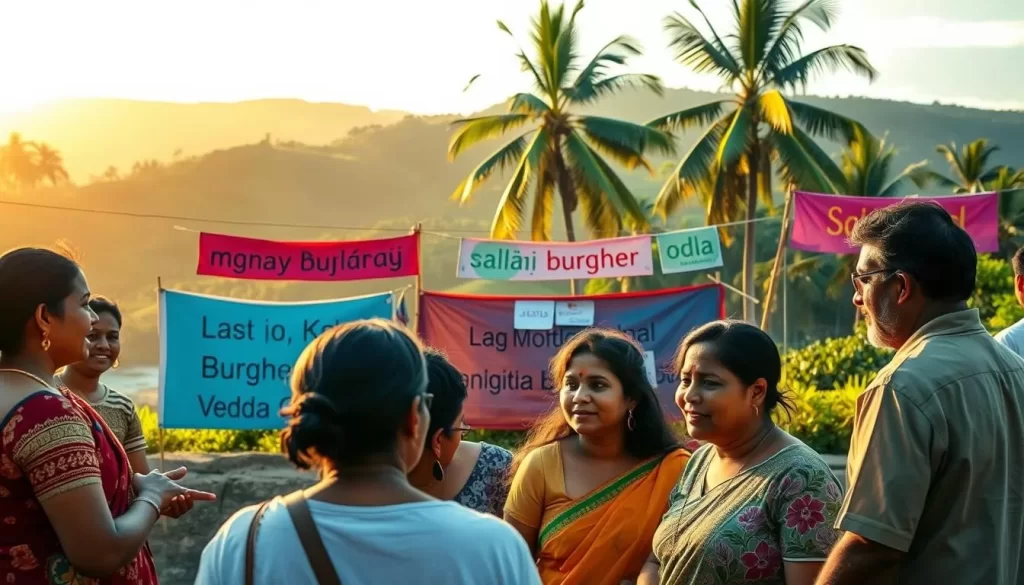
Despite their cultural significance, minority and creole languages face challenges. Urbanization and globalization threaten their survival. Efforts to preserve these dialects are essential to maintaining the island’s rich linguistic heritage.
| Language | Community | Region |
|---|---|---|
| Vedda | Indigenous | Central |
| Rodiya | Lower Caste | Southern |
| Portuguese Creole | Burgher | Coastal |
| Creole Malay | Malay | Urban |
These languages remind us of the island’s cultural richness. They are not just words but living connections to history, identity, and community. By understanding and preserving them, we honor the diversity that makes Sri Lanka unique.
The Role of English and Foreign Language Influences
In Sri Lanka, English has emerged as a bridge connecting diverse communities and industries. While Sinhala and Tamil are the official languages, English serves as a vital link in education, business, and government affairs. Its widespread use highlights the island’s adaptability and global outlook.
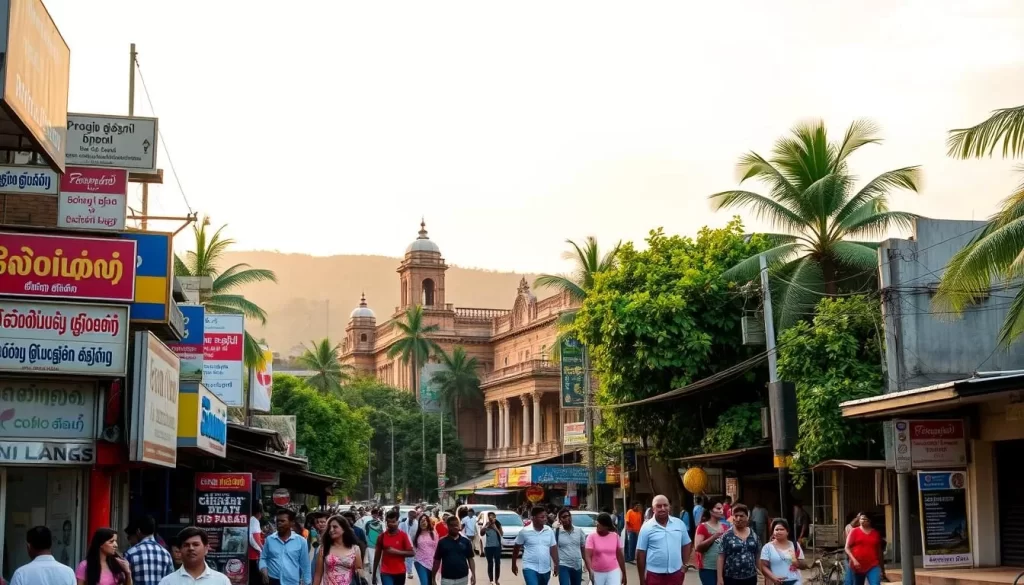
English as a Lingua Franca in Business and Education
English is widely spoken in urban areas and among the younger generation, with approximately 23.8% of the population using it fluently. In business, it facilitates communication with international partners, making it essential for economic growth. Many companies require employees to have a strong command of English, ensuring smooth operations and global competitiveness.
In education, English is a cornerstone of the trilingual system. It’s used as a medium of instruction in higher education, giving students access to global knowledge and opportunities. This emphasis on English helps bridge cultural and business gaps, preparing individuals for success in a connected world.
Local adaptations of English, often called Sri Lankan English, add a unique flavor to communication. Words from Sinhala and Tamil are frequently blended into English, creating a distinct dialect. This intermingling of languages reflects the island’s rich cultural heritage and adaptability.
For a person in Sri Lanka, proficiency in English opens doors to better career prospects and educational opportunities. It’s not just a language spoken but a tool for personal and professional growth. Whether in business meetings or academic settings, English plays a crucial role in daily life.
To learn more about the linguistic diversity of Sri Lanka, visit this detailed guide or explore this comprehensive resource.
Historical Evolution of Language Diversity
The history of Sri Lanka’s language diversity is a fascinating journey through time. Over centuries, the island’s linguistic landscape has been shaped by trade, colonization, and cultural exchange. Each era left its mark, creating a unique blend of languages that reflect the island’s rich heritage.
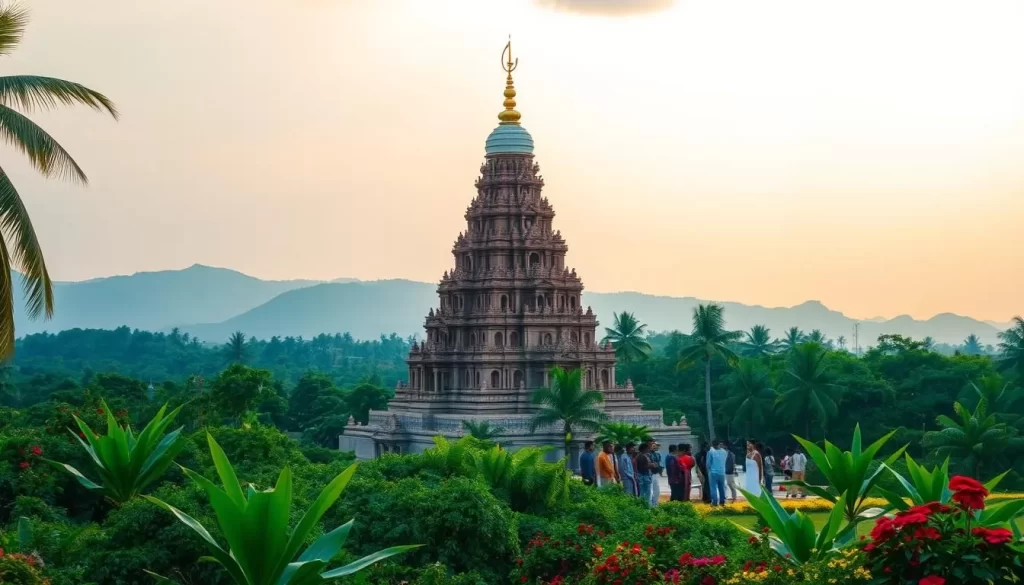
Colonial Impacts on Language Development
Colonial rule played a significant role in shaping Sri Lanka’s languages. The Portuguese, Dutch, and British introduced new words and phrases, blending them with local dialects. For example, Portuguese words like mesa (table) and Dutch terms like kamer (room) became part of everyday vocabulary.
These influences extended beyond vocabulary. Colonial powers also impacted the structure of local languages. The British, in particular, emphasized English in education and administration, leaving a lasting legacy.
Shifts in Language Policy Over Time
Language policies in Sri Lanka have evolved significantly. In 1956, the Official Language Act declared Sinhala as the sole official language, a decision that sparked debates and tensions. This policy shifted in later years, recognizing Tamil as an official language to promote inclusivity.
Today, the island embraces a trilingual approach, with Sinhala, Tamil, and English serving different roles. This policy reflects the island’s commitment to unity and diversity.
- Colonial Influence: Portuguese, Dutch, and British rule introduced new words and structures.
- Policy Changes: The 1956 Official Language Act marked a turning point in language rights.
- Modern Approach: A trilingual system bridges communities and fosters inclusivity.
Understanding this evolution offers insight into the island’s cultural richness. For more on Sri Lanka’s linguistic history, explore this detailed guide or delve into this comprehensive resource.
Linguistic Significance in Culture and Everyday Life
Language in Sri Lanka is more than just communication; it’s a reflection of identity and heritage. It shapes how people connect, celebrate, and preserve their traditions. From daily conversations to grand festivals, language plays a central role in this vibrant culture.
Language and Social Dynamics
In Sri Lanka, the way you speak often reflects your community and background. Sinhala and Tamil are not just tools for communication but markers of identity. For instance, Sinhala is spoken by approximately 17 million people, making it a dominant force in social interactions.
Language also influences how people interact in different settings. In urban areas, English is commonly used in business and education, bridging gaps between diverse groups. This adaptability shows how language evolves to meet modern needs while preserving cultural roots.
Local speakers often blend languages to suit various contexts. For example, Sri Lankan English incorporates words from Sinhala and Tamil, creating a unique dialect. This blending reflects the island’s ability to adapt while staying true to its heritage.
Cultural Festivals and Traditional Expressions
Festivals in Sri Lanka are a celebration of language and culture. Events like Vesak and Poya Day feature traditional songs, prayers, and speeches that highlight the beauty of Sinhala and Tamil. These occasions bring communities together, reinforcing shared values and traditions.
During the Sinhalese and Tamil New Year, language takes center stage. Families exchange greetings, sing folk songs, and recite poetry in their native tongues. This annual celebration marks the sun’s transition from the House of Pisces to the House of Aries, blending astronomy with cultural expression.
Language also plays a key role in religious practices. Over 99% of surveyed individuals consider religion an important part of their daily lives, and language is often the medium for spiritual expression. Whether in temples, mosques, or churches, the words spoken carry deep meaning and connection.
Understanding the linguistic significance in Sri Lanka offers a glimpse into its rich cultural tapestry. For more insights, explore the Sinhalese language heritage or delve into the linguistic dynamics that shape this island’s identity.
Conclusion
Language in this island nation is a vibrant reflection of its culture and identity. From Sinhala spoken by 70% of the population to Tamil’s prominence in the north and east, each dialect tells a story of heritage and unity. Over the years, historical shifts have shaped the linguistic landscape, creating a unique blend of traditions and modern influences.
For every person, language is more than just words. It’s a way to connect with family, community, and history. Whether through festivals, education, or daily conversations, it plays a central role in shaping life on the island.
This diverse linguistic profile highlights both unity and diversity. It’s a testament to the island’s ability to adapt while preserving its rich heritage. As communities evolve, so does the way they express themselves, blending local traditions with global standards.
To explore more about how language continues to define this nation, visit this detailed guide. Dive deeper into the cultural and historical nuances that make this island’s linguistic identity so unique.
The above is subject to change.
Check back often to TRAVEL.COM for the latest travel tips and deals.



